1. Aasvang E, Kehlet H. 2005; Surgical management of chronic pain after inguinal hernia repair. Br J Surg. 92:795–801. DOI:
10.1002/bjs.5103. PMID:
15962258.

2. Chou R, Gordon DB, de Leon-Casasola OA, Rosenberg JM, Bickler S, Brennan T, et al. 2016; Management of postoperative pain: a clinical practice guideline from the American Pain Society, the American Society of Regional Anesthesia and Pain Medicine, and the American Society of Anesthesiologists' Committee on Regional Anesthesia, Executive Committee, and Administrative Council. J Pain. 17:131–57. DOI:
10.1016/j.jpain.2015.12.008. PMID:
26827847.

3. Bulka CM, Shotwell MS, Gupta RK, Sandberg WS, Ehrenfeld JM. 2014; Regional anesthesia, time to hospital discharge, and in-hospital mortality: a propensity score matched analysis. Reg Anesth Pain Med. 39:381–6. DOI:
10.1097/AAP.0000000000000121. PMID:
25025697.
4. Hebbard PD. 2009; Transversalis fascia plane block, a novel ultrasound-guided abdominal wall nerve block. Can J Anaesth. 56:618–20. DOI:
10.1007/s12630-009-9110-1. PMID:
19495909.

5. Chakraborty A, Goswami J, Patro V. 2015; Ultrasound-guided continuous quadratus lumborum block for postoperative analgesia in a pediatric patient. A A Case Rep. 4:34–6. DOI:
10.1213/XAA.0000000000000090. PMID:
25642956.

6. Hansen CK, Dam M, Bendtsen TF, Børglum J. 2016; Ultrasound-guided quadratus lumborum blocks: definition of the clinical relevant endpoint of injection and the safest approach. A A Case Rep. 6:39. DOI:
10.1213/XAA.0000000000000270. PMID:
26771297.
7. Kumar GD, Gnanasekar N, Kurhekar P, Prasad TK. 2018; A comparative study of transversus abdominis plane block versus quadratus lumborum block for postoperative analgesia following lower abdominal surgeries: a prospective double-blinded study. Anesth Essays Res. 12:919–23. DOI:
10.4103/aer.AER_158_18. PMID:
30662131. PMCID:
PMC6319076.

8. Webster K. 2008; The Transversus Abdominis Plane (TAP) block: abdominal plane regional anaesthesia. Update Anaesth. 24:24–9.
9. Carney J, McDonnell JG, Ochana A, Bhinder R, Laffey JG. 2008; The transversus abdominis plane block provides effective postoperative analgesia in patients undergoing total abdominal hysterectomy. Anesth Analg. 107:2056–60. DOI:
10.1213/ane.0b013e3181871313. PMID:
19020158.

10. El-Dawlatly AA, Turkistani A, Kettner SC, Machata AM, Delvi MB, Thallaj A, et al. 2009; Ultrasound-guided transversus abdominis plane block: description of a new technique and comparison with conventional systemic analgesia during laparoscopic cholecystectomy. Br J Anaesth. 102:763–7. DOI:
10.1093/bja/aep067. PMID:
19376789.
11. Carney J, Finnerty O, Rauf J, Curley G, McDonnell JG, Laffey JG. 2010; Ipsilateral transversus abdominis plane block provides effective analgesia after appendectomy in children: a randomized controlled trial. Anesth Analg. 111:998–1003. DOI:
10.1213/ANE.0b013e3181ee7bba. PMID:
20802056.

12. Aveline C, Le Hetet H, Le Roux A, Vautier P, Cognet F, Vinet E, et al. 2011; Comparison between ultrasound-guided transversus abdominis plane and conventional ilioinguinal/iliohypogastric nerve blocks for day-case open inguinal hernia repair. Br J Anaesth. 106:380–6. DOI:
10.1093/bja/aeq363. PMID:
21177284.

13. López-González JM, López-Álvarez S, Jiménez Gómez BM, Areán González I, Illodo Miramontes G, Padín Barreiro L. 2016; Ultrasound-guided transversalis fascia plane block versus anterior transversus abdominis plane block in outpatient inguinal hernia repair. Rev Esp Anestesiol Reanim. 63:498–504. DOI:
10.1016/j.redar.2016.02.005. PMID:
27067036.

14. Scimia P, Basso Ricci E, Petrucci E, Behr AU, Marinangeli F, Fusco P. 2018; Ultrasound-guided transversalis fascia plane block: an alternative approach for anesthesia in inguinal herniorrhaphy: a case report. A A Pract. 10:209–11. DOI:
10.1213/XAA.0000000000000666. PMID:
29652687.

15. Rahimzadeh P, Faiz SHR, Imani F, Rahimian Jahromi M. 2018; Comparison between ultrasound guided transversalis fascia plane and transversus abdominis plane block on postoperative pain in patients undergoing elective cesarean section: a randomized clinical trial. Iran Red Crescent Med J. 20:e67844. DOI:
10.5812/ircmj.67844.
16. Ahmed A, Fawzy M, Nasr MAR, Hussam AM, Fouad E, Aboeldahb H, et al. 2019; Ultrasound-guided quadratus lumborum block for postoperative pain control in patients undergoing unilateral inguinal hernia repair, a comparative study between two approaches. BMC Anesthesiol. 19:184. DOI:
10.1186/s12871-019-0862-z. PMID:
31623572. PMCID:
PMC6798412.

17. Öksüz G, Bilal B, Gürkan Y, Urfalioğlu A, Arslan M, Gişi G, et al. 2017; Quadratus lumborum block versus transversus abdominis plane block in children undergoing low abdominal surgery: a randomized controlled trial. Reg Anesth Pain Med. 42:674–9. DOI:
10.1097/AAP.0000000000000645. PMID:
28759502.
19. Carline L, McLeod GA, Lamb C. 2016; A cadaver study comparing spread of dye and nerve involvement after three different quadratus lumborum blocks. Br J Anaesth. 117:387–94. DOI:
10.1093/bja/aew224. PMID:
27543534.

20. Yang HM, Park SJ, Yoon KB, Park K, Kim SH. 2018; Cadaveric evaluation of different approaches for quadratus lumborum blocks. Pain Res Manag. 2018:2368930. DOI:
10.1155/2018/2368930. PMID:
29991972. PMCID:
PMC6016158.





 PDF
PDF Citation
Citation Print
Print



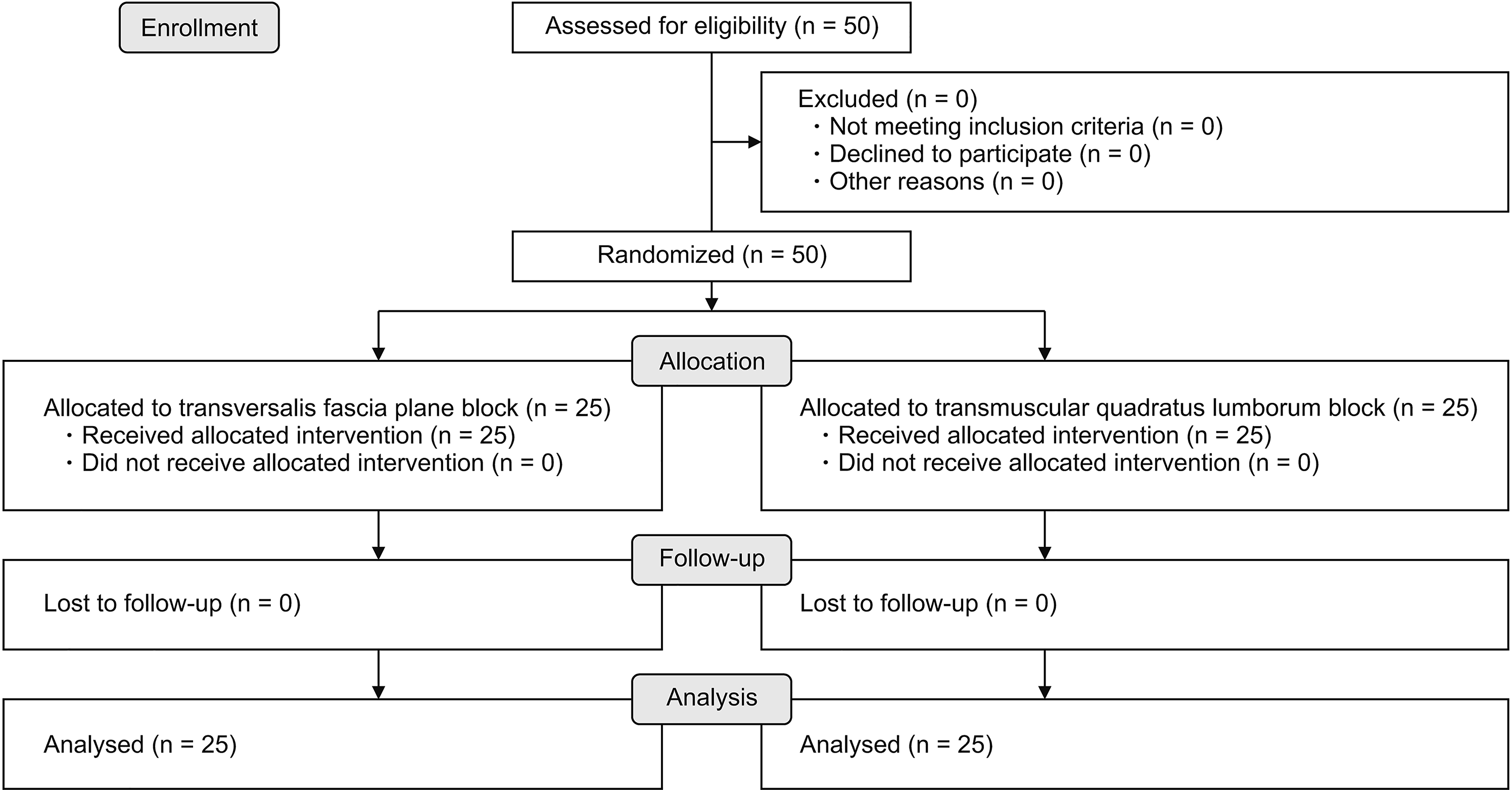
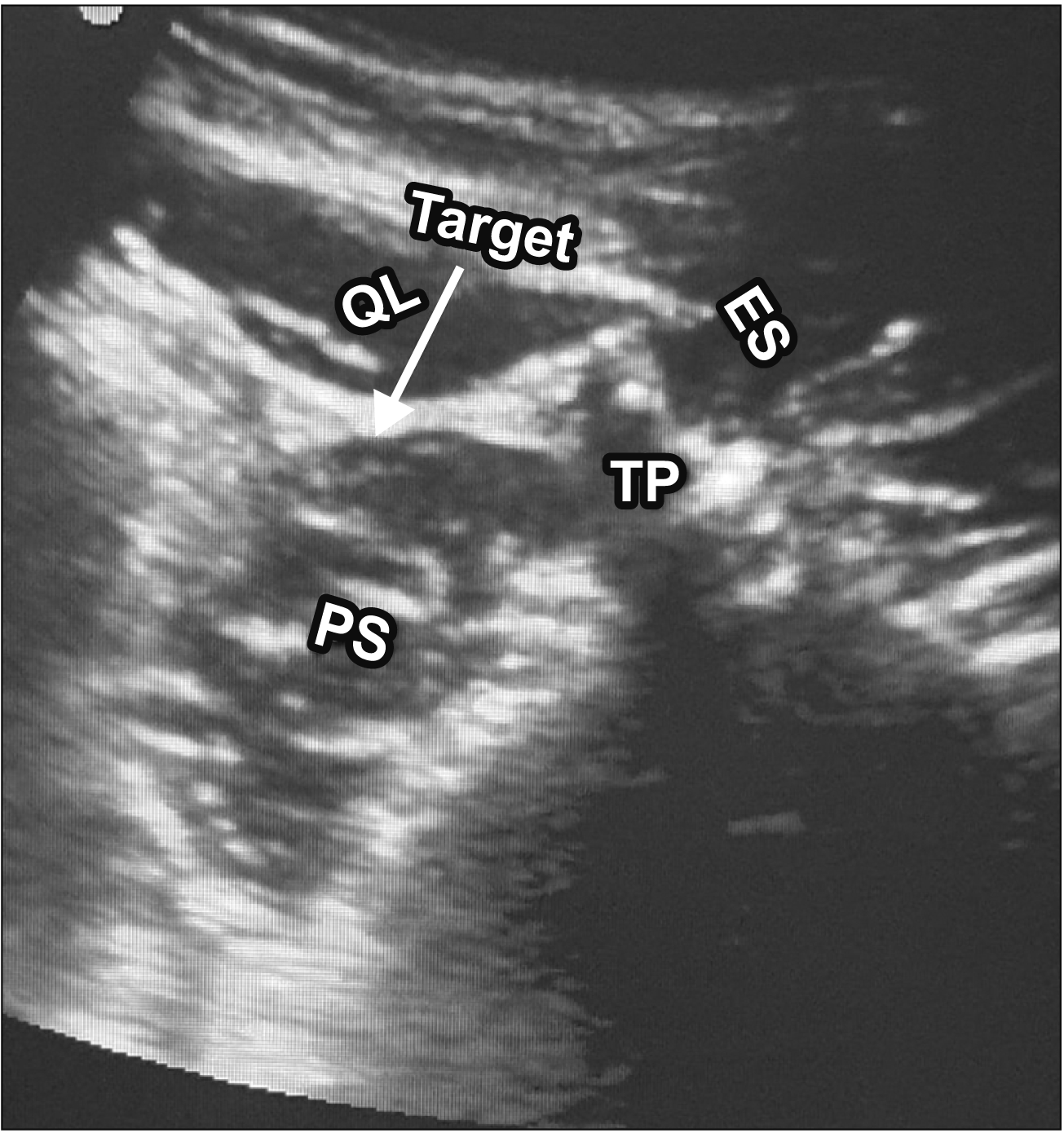
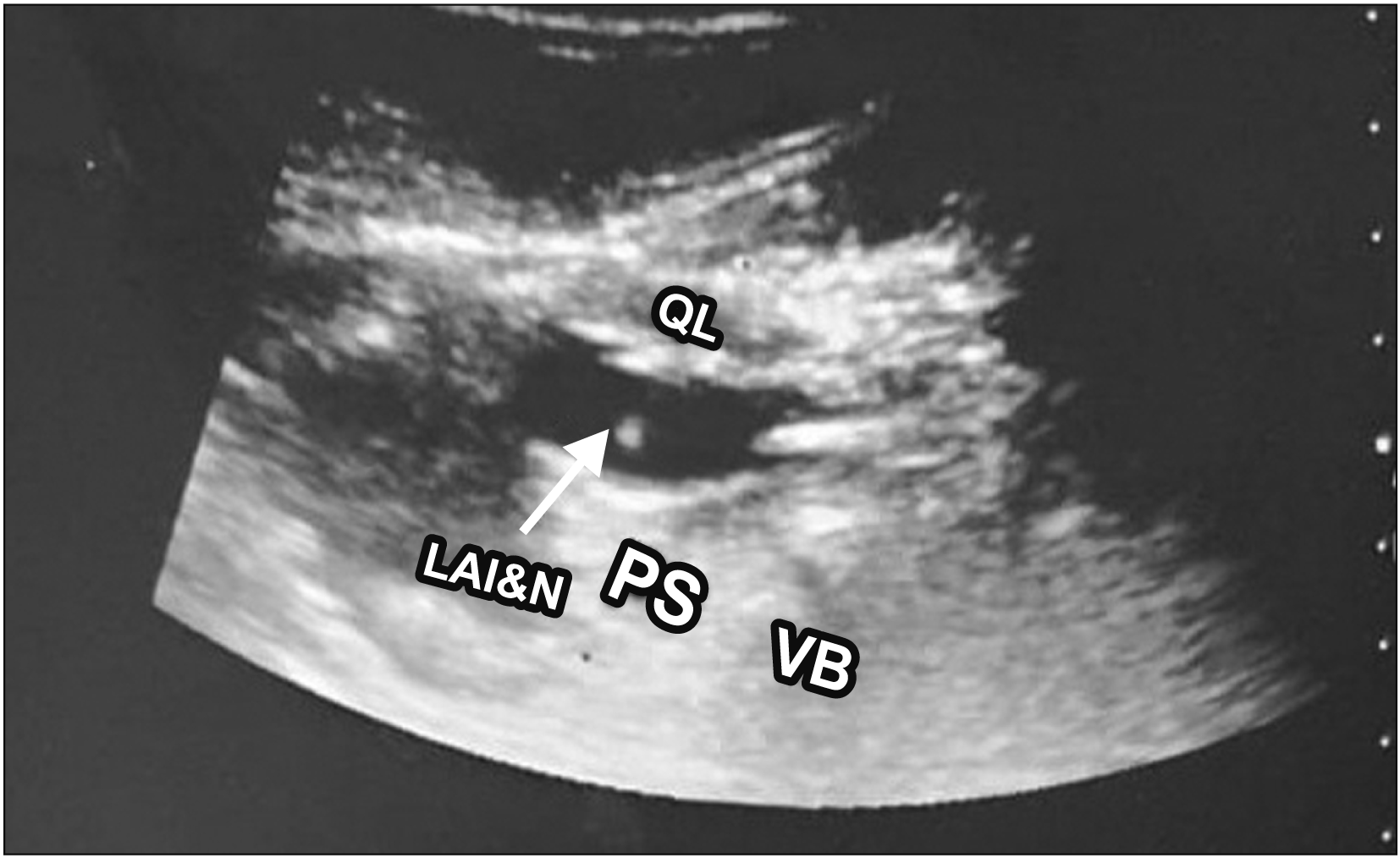
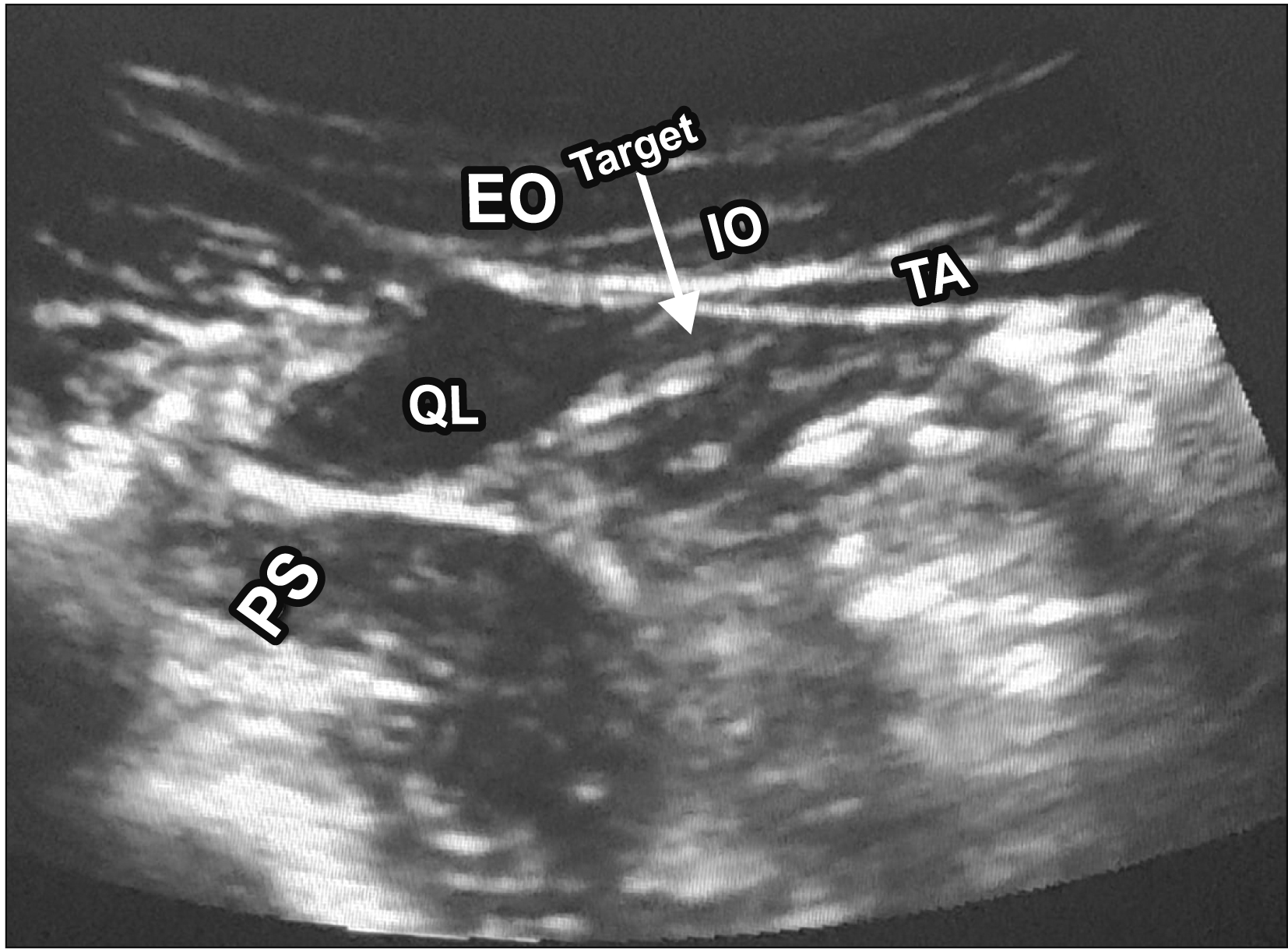
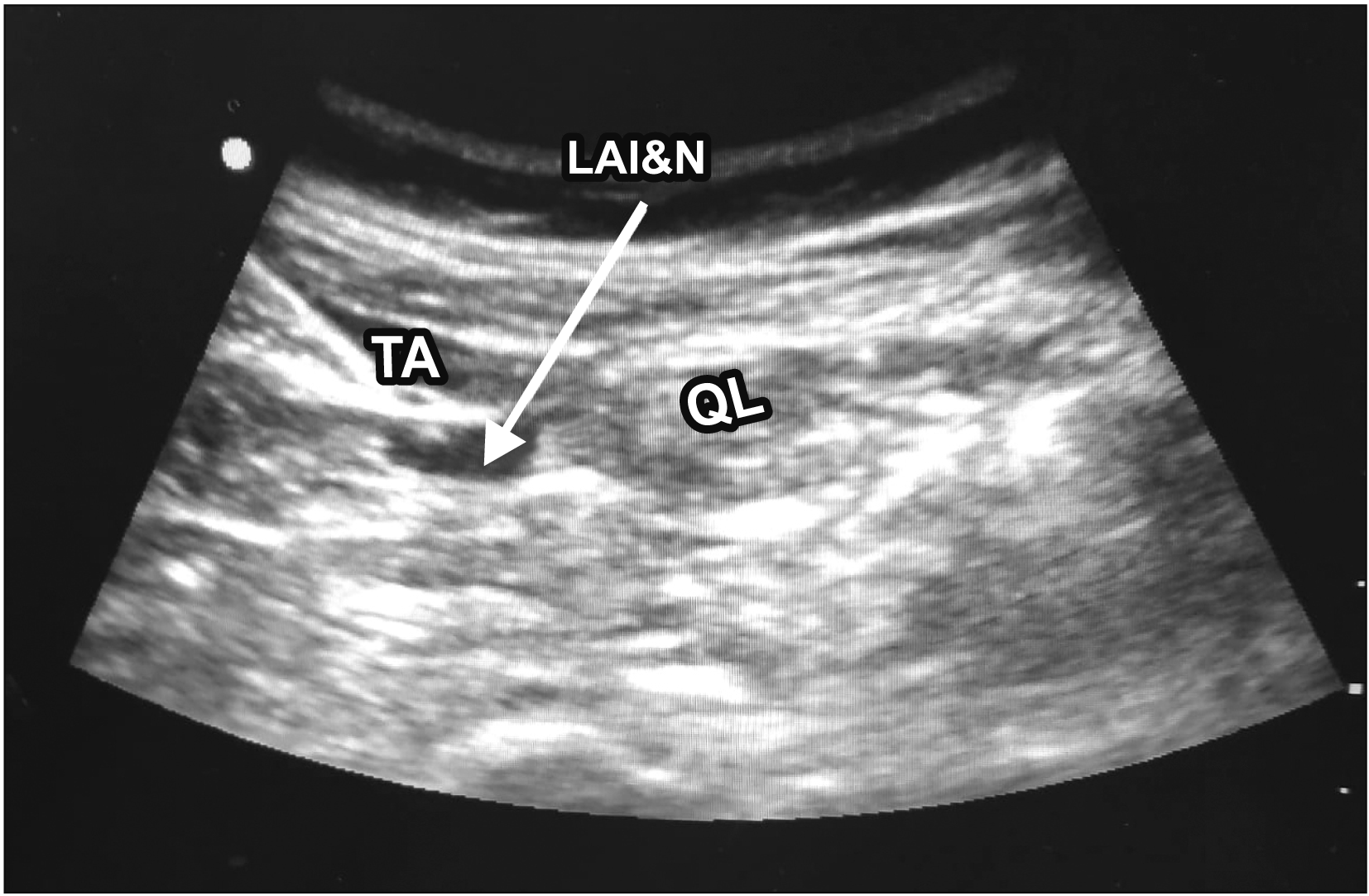
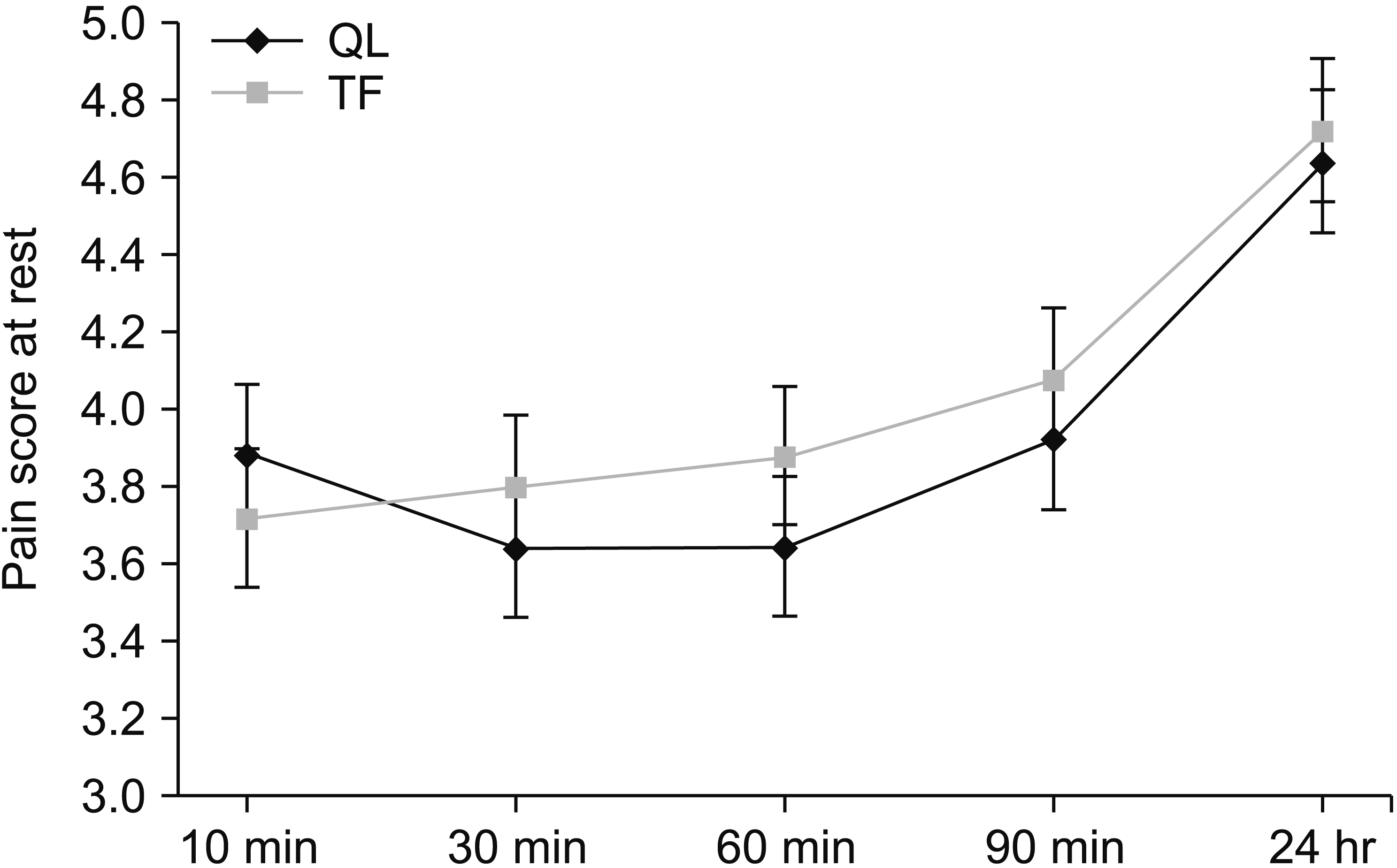
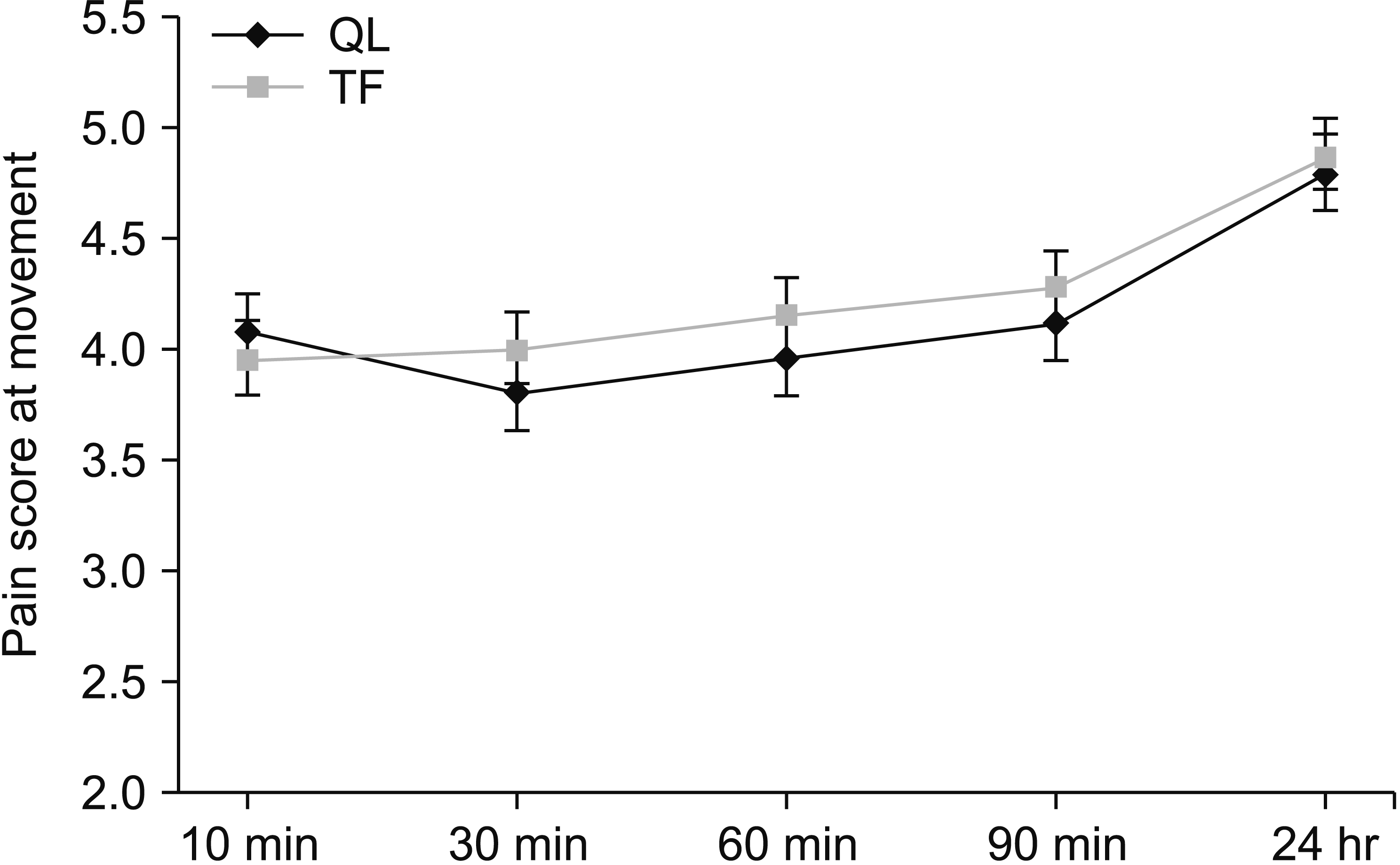
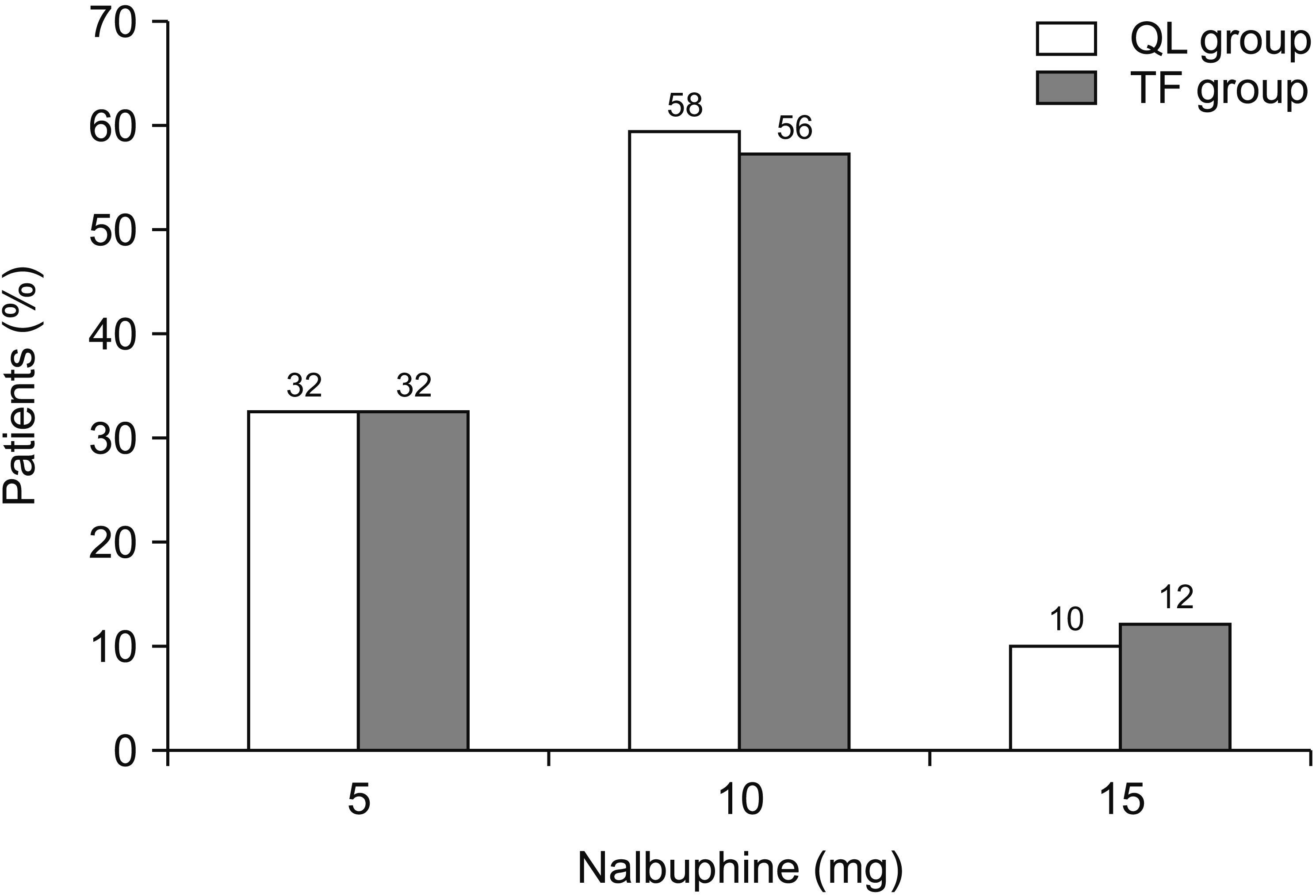
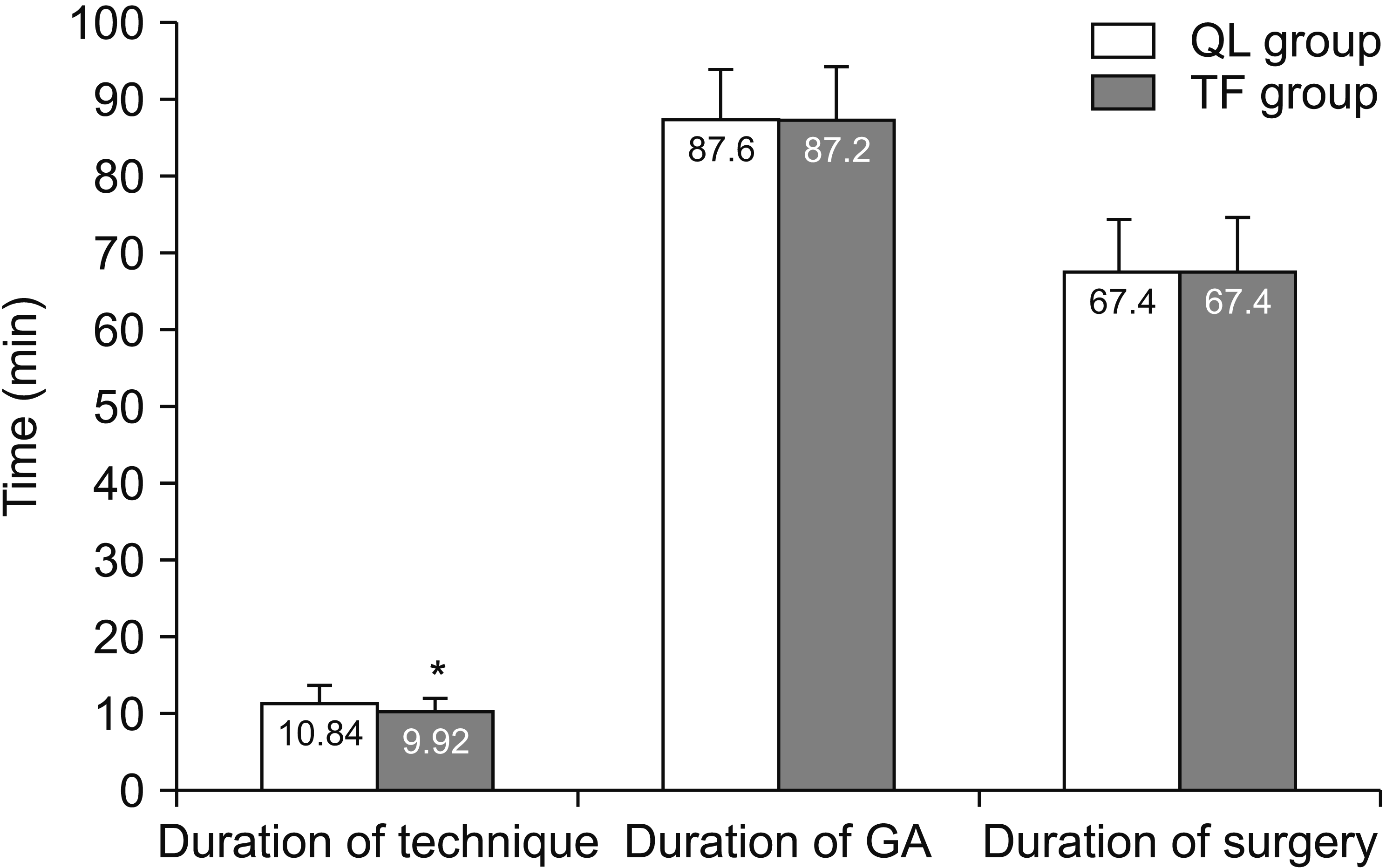
 XML Download
XML Download